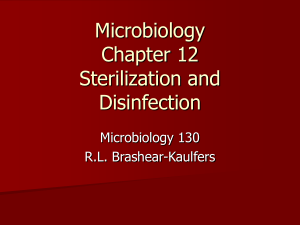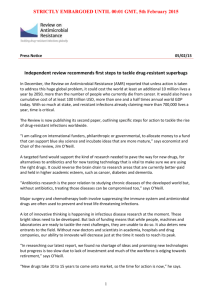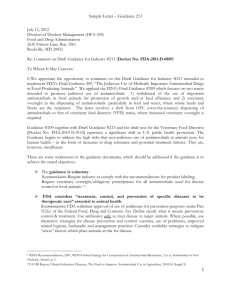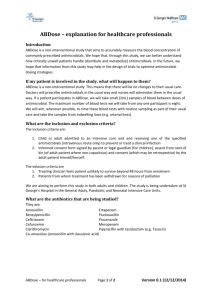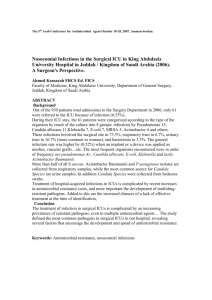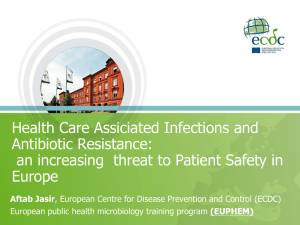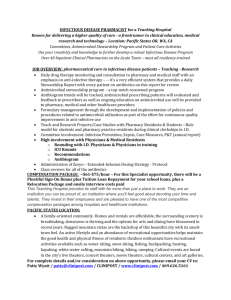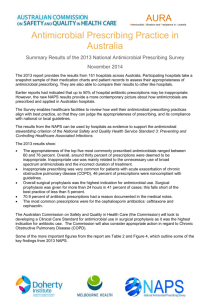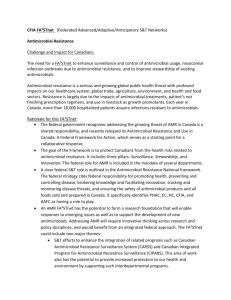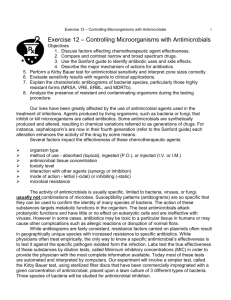Lesson1.0_About Antimicrobial Resistance
advertisement
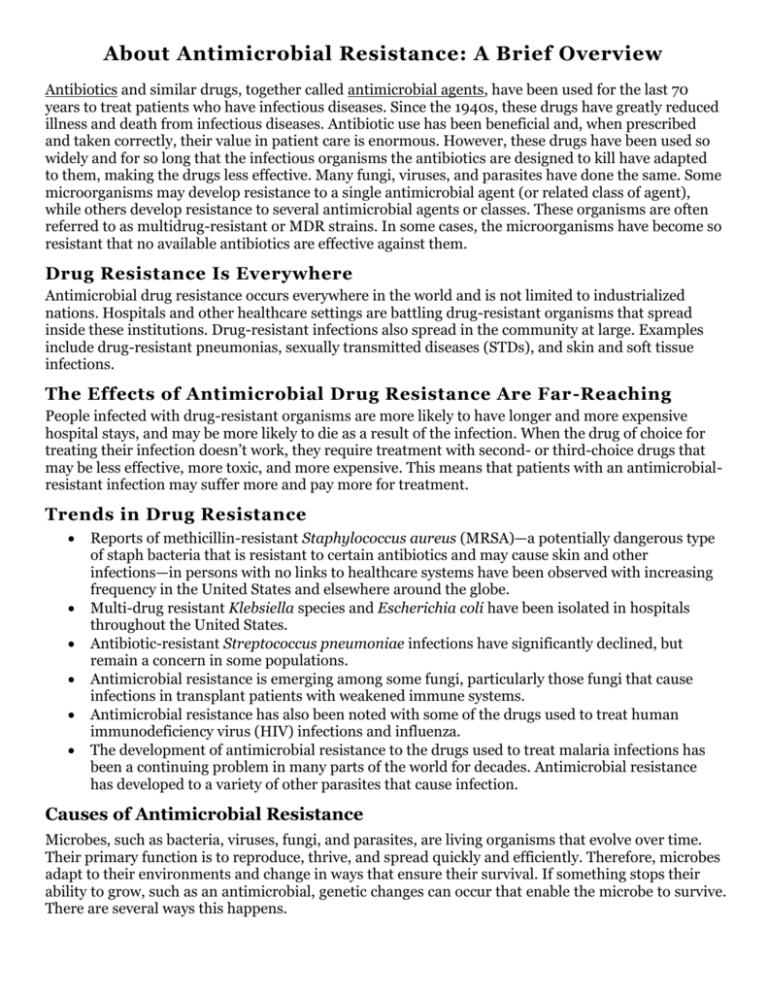
About Antimicrobial Resistance: A Brief Overview Antibiotics and similar drugs, together called antimicrobial agents, have been used for the last 70 years to treat patients who have infectious diseases. Since the 1940s, these drugs have greatly reduced illness and death from infectious diseases. Antibiotic use has been beneficial and, when prescribed and taken correctly, their value in patient care is enormous. However, these drugs have been used so widely and for so long that the infectious organisms the antibiotics are designed to kill have adapted to them, making the drugs less effective. Many fungi, viruses, and parasites have done the same. Some microorganisms may develop resistance to a single antimicrobial agent (or related class of agent), while others develop resistance to several antimicrobial agents or classes. These organisms are often referred to as multidrug-resistant or MDR strains. In some cases, the microorganisms have become so resistant that no available antibiotics are effective against them. Drug Resistance Is Everywhere Antimicrobial drug resistance occurs everywhere in the world and is not limited to industrialized nations. Hospitals and other healthcare settings are battling drug-resistant organisms that spread inside these institutions. Drug-resistant infections also spread in the community at large. Examples include drug-resistant pneumonias, sexually transmitted diseases (STDs), and skin and soft tissue infections. The Effects of Antimicrobial Drug Resistance Are Far -Reaching People infected with drug-resistant organisms are more likely to have longer and more expensive hospital stays, and may be more likely to die as a result of the infection. When the drug of choice for treating their infection doesn’t work, they require treatment with second- or third-choice drugs that may be less effective, more toxic, and more expensive. This means that patients with an antimicrobialresistant infection may suffer more and pay more for treatment. Trends in Drug Resistance Reports of methicillin-resistant Staphylococcus aureus (MRSA)—a potentially dangerous type of staph bacteria that is resistant to certain antibiotics and may cause skin and other infections—in persons with no links to healthcare systems have been observed with increasing frequency in the United States and elsewhere around the globe. Multi-drug resistant Klebsiella species and Escherichia coli have been isolated in hospitals throughout the United States. Antibiotic-resistant Streptococcus pneumoniae infections have significantly declined, but remain a concern in some populations. Antimicrobial resistance is emerging among some fungi, particularly those fungi that cause infections in transplant patients with weakened immune systems. Antimicrobial resistance has also been noted with some of the drugs used to treat human immunodeficiency virus (HIV) infections and influenza. The development of antimicrobial resistance to the drugs used to treat malaria infections has been a continuing problem in many parts of the world for decades. Antimicrobial resistance has developed to a variety of other parasites that cause infection. Causes of Antimicrobial Resistance Microbes, such as bacteria, viruses, fungi, and parasites, are living organisms that evolve over time. Their primary function is to reproduce, thrive, and spread quickly and efficiently. Therefore, microbes adapt to their environments and change in ways that ensure their survival. If something stops their ability to grow, such as an antimicrobial, genetic changes can occur that enable the microbe to survive. There are several ways this happens. Natural (Biological) Causes Selective Pressure In the presence of an antimicrobial, microbes are either killed or, if they carry resistance genes, survive. These survivors will replicate, and their progeny will quickly become the dominant type throughout the microbial population. Gene Transfer Mutation Most microbes reproduce by dividing every few hours, allowing them to evolve rapidly and adapt quickly to new environmental conditions. During replication, mutations arise and some of these mutations may help an individual microbe survive exposure to an antimicrobial. Microbes also may get genes from each other, including genes that make the microbe drug resistant. These genes are typically found on rings of DNA, called plasmids. A bacterium that has acquired an antibiotic resistance gene on a plasmid may transfer this plasmid to other bacteria, conferring the antibiotic resistance trait to them. Societal Pressures The use of antimicrobials, even when used appropriately, creates a selective pressure for resistant organisms. However, there are additional societal pressures that act to accelerate the increase of antimicrobial resistance. Inappropriate Use Selection of resistant microorganisms is exacerbated by inappropriate use of antimicrobials. Sometimes healthcare providers will prescribe antimicrobials inappropriately, wishing to placate an insistent patient who has a viral infection or an as-yet undiagnosed condition. Hospital Use Critically ill patients are more susceptible to infections and, thus, often require the aid of antimicrobials. However, the heavier use of antimicrobials in these patients can worsen the problem by selecting for antimicrobial-resistant microorganisms. The extensive use of antimicrobials and close contact among sick patients creates a fertile environment for the spread of antimicrobial-resistant germs. Agricultural Use Scientists also believe that the practice of adding antibiotics to agricultural feed for livestock promotes drug resistance. More than half of the antibiotics produced in the United States are used for agricultural purposes.


